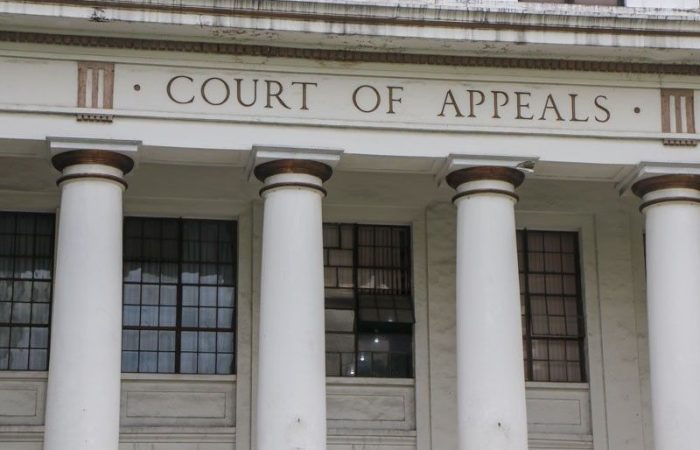By: Melanie Eisenhart
Suppose you come across a picture of yourself, without your permission, posted on a website advertising a local business? You’d probably sense that this seems wrong and that your rights were imposed upon in some way. A courteous phone call to the business will likely resolve the issue, but what if the business will not cooperate? Or what if you find your image on a social media site like Facebook, Instagram, Twitter, or Tumblr, or one of many “cheater” websites like LiarsCheatersR’Us, Cheater Report, The Dirty, Online Dating Scams 101, or Cheater Reports, and the poster refuses to remove the image?
If the poster will not voluntarily remove your image, one possible avenue of recourse is to determine if the poster has infringed upon a copyright.[1]
Copyright law applies to amateurs and professionals alike. Section 104 of the Copyright Act takes an individual’s rights to their intellectual property further and safeguards even unpublished artistic works. A copyright in an original work exists at the moment of creation; however, to bring a lawsuit for infringement, the author must comply with the statutory requirements of the Copyright Act.[2]
The first step is to determine who owns the copyright by determining who took the picture or image you are seeking to remove. Perhaps contrary to your suspicion, the photographer of an image owns the copyright to that image and has certain intellectual property rights associated with the image, including how the image is used—as the person in the photograph, you have no intellectual property rights to the image. If the poster took the picture, the poster owns the copyright and posting the picture will not violate any copyright infringement claims[3]
If the person who posted the image did not take the image, the next question is to determine if the poster is allowed to post the image. One way to avoid a copyright infringement claim is to get permission from the person who owns the copyright. Another way to avoid a copyright infringement claim is if the image may fall under the fair use doctrine.
Fair use is an affirmative defense to an accusation of copyright infringement. In other words, it is an excuse, or an exception, to infringing upon the rights of another.
Section 107 of the Copyright Act lays out the statutory doctrine of fair use, and details four factors that courts consider in determining whether fair use is applicable to an allegation of copyright infringement. The section states:
“[T]he fair use of a copyrighted work, including such use by reproduction in copies or phonorecords or by any other means specified by that section, for purposes such as criticism, comment, news reporting, teaching (including multiple copies for classroom use), scholarship, or research, is not an infringement of copyright. In determining whether the use made of a work in any particular case is a fair use the factors to be considered shall include–
(1) the purpose and character of the use, including whether such use is of a commercial nature or is for nonprofit educational purposes;
(2) the nature of the copyrighted work;
(3) the amount and substantiality of the portion used in relation to the copyrighted work as a whole; and
(4) the effect of the use upon the potential market for or value of the copyrighted work.
The fact that a work is unpublished shall not itself bar a finding of fair use if such finding is made upon consideration of all the above factors.”
Courts have further expanded on how these four factors are evaluated.
Factor One: The Purpose and Character of the Use
If the user stands to profit from the use of the copyrighted material without compensating the creator, this tends to weigh against fair use. In Harper & Row Publishers, Inc. v. Nation Enterprises,[4] the court found that fair use did not apply and the plaintiff publisher’s copyright was violated when the defendant magazine used quotes from former president Gerald Ford’s soon-to-be-published memoir because the magazine sought to profit from the plaintiff publisher’s material prior to the publication date.
Factor Two: Nature of the Copyrighted Work
When a work is more creative than factual in nature, fair use is less likely to be found. See generally Stewart v. Abend, 495 U.S. 207, 237 (1990) (noting that a movie derived from a fictional short story falls short of fair use and violates the owner’s copyright due to the similarities between the movie and story and the creative nature of the story).
Factor Three: Amount and Substantiality of the Portion Used
While the amount of the work used is important, whether the portion was of high significance, or the “heart of the copyrighted work,” generally plays a greater role in determining fair use. See generally Sundeman v. The Seajay Soc’y, Inc., 142 F.3d 194, 205 (4th Cir. 1998) (finding that fair use applied and the copyright was not violated because the portions of text quoted by the defendant in an oral presentation, while significant, were not significant enough to be considered the heart of the material).
Factor Four: The Effect of the Use Upon the Potential Market for or Value of the Work
Since one of the benefits of the Copyright Act is to encourage creativity, it is natural that the owner of a work would expect to be compensated for his or her creation. When considering the effects on the potential market, courts look at whether the use “would materially impair the marketability of the work and whether it would act as a market substitute.” Bond v. Blum, 317 F.3d 385, 396 (4th Cir. 2003). See generally Harper & Row, 471 U.S. at 566 (finding that the use was not fair and violated the owner’s copyright because the quotes borrowed from President Ford’s unpublished manuscript showed clear-cut evidence of damage to the book’s marketability upon publication).
Most courts rely on the Supreme Court decision in Campbell v. Acuff-Rose Music, Inc. and find that these four factors cannot be considered in a vacuum, but must be “weighed together, in light of the purposes of copyright.” 510 U.S. 569, 578 (1994). Essentially, each of the fair use factors is important and creates a balance between the rights of the owner and the interests of the public.
A recent Virginia case raised the issue of copyright infringement when the plaintiffs, four high school students, challenged iParadigms (also known as Turnitin) for archiving their papers into the system’s database in order to evaluate future student submissions for plagiarism. A.V. ex. rel. Vanderhye v. iParadigms, LLC, 562 F.3d 630, 635-36 (4th Cir. 2009). The court found that the defendant infringed upon the plaintiffs’ rights, but that, after considering each of the four factors and weighing their relevance together, the defense of fair use applied and the defendant did not violate the students’ copyrights. Id. at 645.
Copyright infringement is a serious issue, so a good rule of thumb is to always ask the owner’s permission before using an image that doesn’t belong to you. This could avoid the potential for copyright infringement and future litigation.
Footnotes:
[1] This differs from the protection offered by a trademark. To be clear, a trademark and a copyright are completely different. While a copyright protects artistic expression, a trademark protects a brand. Specifically, a trademark is “a word, phrase, symbol, or design, or a combination thereof, that identifies and distinguishes the source of the goods of one party from those of others.” United States Patent and Trademark Office, Protecting Your Trademark: Enhancing Your Rights Through Federal Registration, 1 (2015), http://www.uspto.gov/sites/default/files/BasicFacts.pdf. A trademark offers the same protection as a copyright when it is registered and published through the United States Patent and Trademark Office.
[2] Edgerton v. UPI Holdings, Inc., 2010 WL 2651304, at *5 (D.Md. July 1, 2010).
[3] Copyrights are federally protected through the Copyright Act, found in Title 17 of the United States Code. According to Section 102 of the Act, “copyright protection subsists [. . .] in original works of authorship fixed in any tangible medium of expression, now known or later developed, from which they can be perceived, reproduced, or otherwise communicated, either directly or with the aid of a machine or device. Works of authorship include the following categories:
(1) literary works;
(2) musical works, including any accompanying words;
(3) dramatic works, including any accompanying music;
(4) pantomimes and choreographic works;
(5) pictorial, graphic, and sculptural works;
(6) motion pictures and other audiovisual works;
(7) sound recordings; and
(8) architectural works.”
[4] 471 U.S. 539, 562 (1997).



